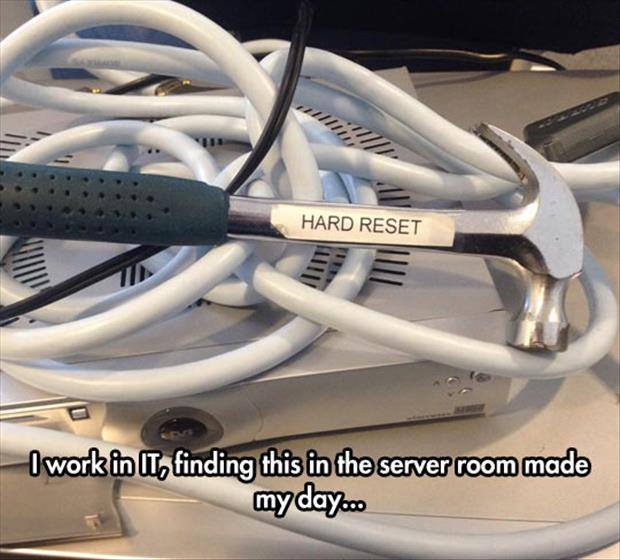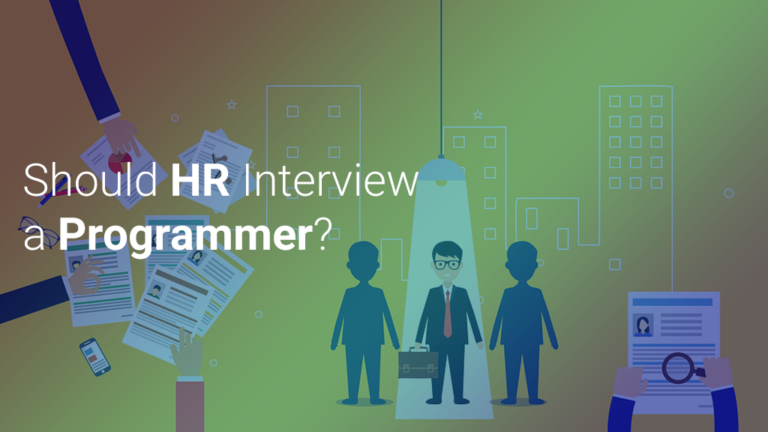On The Fly – February 18, 2021
Volume 2. Issue 2. February 18, 2021 Here’s to you! At Swan, we love what we do, but also know that it is important to maintain a balance in our life/work schedules and take time for the fun stuff. As I was looking over my calendar for this month I realized that even though February […]
On The Fly

Volume 2. Issue 2. February 18, 2021
Here’s to you!
At Swan, we love what we do, but also know that it is important to maintain a balance in our life/work schedules and take time for the fun stuff. As I was looking over my calendar for this month I realized that even though February is the shortest month of the year it is not short on holidays, national days, events, and remembrances.

Most of us know that February has Groundhog Day, Abraham Lincoln’s Birthday, Valentine’s Day, President’s day, and, of course, February is Black History month. But did you know that February also includes National Dark Chocolate Day (1), National Pizza Day (9), and National Eat Ice Cream for Breakfast Day (6)? I had no idea that I had missed out on these, but I have added them to my calendar for next year.
Fortunately, there is still time to observe National Caregivers Day (19), National Chili Day (25), National Skip the Straw Day (26), and a couple dozen more! You can see a great list at nationaltoday.com.
Today, February 18th, the Swan team is going to celebrate National Drink Wine Day with a nice Chardonnay! We lift our glasses to you, and wish you all health, happiness and time to enjoy the little moments along the way!
Cheers!
Here are some interesting articles we found on the web. Let us know what you think!
TECH

2021: The Year of Robotics and Artificial Intelligence
I’m writing this just before New Year’s Day, and like many of you I’m hoping to reach my one remaining goal for 2020, which is to be alive in 2021. I’m looking forward to putting 2020 behind, and while the pandemic has been painful, it has caused things to accelerate in several areas impressively rapidly. Two of those areas are robotics and artificial intelligence, which we’ll see adapted broadly this decade with a considerable bump in 2021.
Let’s talk about all of that this week, and we’ll close with my first product of the week in 2021, the Somnofy AI Sleep Monitor.
Let’s begin.
Robots, Robots, Robots
Robots, robots, and more robots will increasingly surround us in 2021.
We ended 2020 watching the Boston Dynamics robots do choreography. This showcased just how incredibly capable these things are becoming and making some of us wonder if we should be looking for Skynet.
However, rather than anticipating robots that will either kill or protect us, much of what we’ll see is delivery and food prep.
One of the big things that happened late in 2020 was that the FAA cleared the way for drone delivery, allowing drones to fly over populated areas and at night. Initially, drone delivery will mostly deploy in rural areas where it makes sense given the lack of high-density housing such apartment complexes that don’t lend themselves to drone delivery. Still, for some of us, drones delivering packages will be common by the end of this year. For folks in New York and Las Vegas, Walmart will be delivering by air to you shortly.
We aren’t just talking about flying drones either, as drones with wheels are coming off their 2019 trials and going into production. California is the first state with large delivery autonomous vehicles. However, I expect, primarily because we are still mostly home during the days now — so we are around to unload the things — that this will spread far and wide, again mostly in rural areas, by year’s end.
But this won’t just be for the delivery because restaurants are becoming automated as well, since machines don’t catch or spread diseases and can operate 24/7. It strikes me that we could have gone back to the automat concept to separate customers from those preparing and serving the food. Still, the automated restaurant appears to be blending industrial robots for food preparation and delivery.
Automation deals with two problems: the lack of people that want to work in fast-food restaurants (virtually all of them in my area have a help wanted sign) and keeping the place open during a pandemic.
Finally, we are short hundreds of thousands of truckers, and one of the ways to address this is to put autonomous tractor-trailer rigs onto the major highways for long-haul routes. This outcome is iffy because the unions are fighting this. Still, given the massive shortage of drivers, shipping companies’ only path is to replace the drivers, which means it won’t be long until semi-trucks no longer have drivers.
AI Domination
Another place we are going to see a ton of deployments is AI. From temperature monitors at entrances to transportation, offices, hospitals, and restaurants that alert and sometimes prevent entry for those running a bit hot, to radically improved digital assistants, we are going to be surrounded by AI.
One of the exciting efforts that started in 2020 was Nvidia’s Broadcast app and its Omniverse Machinima.
These showcase how an AI can significantly enhance your next video conference. Think of GPU-centric capabilities using technology like deepfakes to give you a desirable looking virtual office that looks more realistic than the backgrounds we currently have, the elimination of background noise, and even the ability to take years off your age and dress you virtually so you appear more professional on screen.
In the following years, I expect this ability to dynamically clothe you will advance so you will appear to be dressed in culturally acceptable ways for each country you are broadcasting. I expect we’ll also have issues that the movie “Lost in Space” showcased when Will Robinson replaced his teacher’s image complaining about his behavior with a cartoon ape. I can think of several ways this capability could end badly for someone.
With your digital assistant integrating with products like the Cisco Webex Desk Hub blending your office and smartphone and backing it up with an office-focused digital assistant, we’ll have Alexa-like capabilities in our homes and offices.
These won’t be like Siri but are increasingly backed by mature AI technologies like IBM’s Watson to provide far more profound insights and better answers to your business questions. It will be easier to find out who is responsible for something, whom you need approvals from, whom you should be collaborating with, and get far more timely alerts if you are doing something that could land you in trouble.
Finally, the AI-driven health monitors that we wear are due for a substantial upgrade. Think more accurate blood pressure, insulin, and heart monitors tied directly to EMTs and medical services so that you get the medical help you need more quickly and more accurately. This advancement should be the beginning of embedded technology and form a bridge to advanced prosthetics. These advancements include improved brain interfaces, which will also lay a foundation for future man-machine interfaces.
Wrapping Up
I’m only touching on a few of the advancements we’ll see in 2021, but at the heart of most of these are now-maturing advancements in man-machine interfaces, more capable AI systems, and increasingly prevalent robots and autonomous vehicles.
Oh, flying cars, flying suits, and flying motorcycles are also moving into production in 2021.
These emerging technologies should make 2021 a fascinating year — though it will likely take much of the decade to make all of this new technology acceptable to most of us.
DEVELOPMENT

Let Customer Experience Drive Your Software Development
When developing customer-facing software, the end-users’ overall experience is vital to business retention and informing the next stages of development.
Customers today are increasingly aware of the options available to them. People want unified, smooth, continuous interactions with the brands they follow and the products they use, which puts technology at the center of these experiences.
From a brand perspective, technology can provide deep insights into what customers expect from their interactions. So for most organizations, a customer-centric IT strategy must go far beyond simply setting up a CRM solution and enabling customer support.
Let’s explore why customer experience (CX) is so important in the software development process, and what technology leaders can do to integrate a CX mindset into their projects.
Customer Experience Primer
The concept of customer experience is widely known in the business world, so we’ll keep this brief: CX has been defined as, “The quality of all of a consumer’s encounters with a company’s products, services, and brand.” It comprises every interaction a customer has with your brand or products, from the very first encounter.
The challenge for many technology executives is translating that into their product strategy. Here are a few pointers for achieving that.
Prioritize User Experience
First you’ll need to establish visual consistency across all touchpoints. Apple’s hardware and software are great examples of how a consistent visual identity creates loyalty among customers. Ease of use and speed are also key factors, so work closely with your UX/UI teams to move your product development in this direction.
User feedback plays a significant role in this process. You must have the ability to capture high-quality user feedback and interaction data. Taking it one step further, real-time data can help your teams understand customer behavior and expectations on the fly, enabling them to keep users engaged at the most impactful moments.
Remember to loop that feedback back to the customers, as this higher level of engagement helps to build and retain user loyalty. Interactions like notifications, likes, follower counts, upvotes and comments represent a few of the ways you can implement feedback loops.
Gathering feedback is only the beginning, though. The real reward comes with the use of feedback and insights to improve the software iteratively.
Act Fast on Customer Feedback and Stay Connected
Obtaining customer feedback is an ongoing, continuous process that’s fully aligned with the iterative process of software development. At every possible opportunity, you should be improving how you gather data and understand customers as the product evolves and changes based on previous feedback.
It’s absolutely necessary to prototype and iterate quickly to further enhance CX — today’s customers don’t like waiting and expect instant fixes to their problems.
Barely a decade ago, pushing out updates and releases was a semi-annual thing at best. Now, they’re practically an everyday occurrence, so there’s no excuse for leaving your customers out of that process. After all, the more they know, the better their experience.
Driving Forward with Insights
Don’t get caught up in vanity metrics. For example, it doesn’t matter how many millions of users you have if most of them are unhappy using your product. Instead, switch to an insight-driven approach that helps to understand customer behavior in the real world.
People use your product because they see some value in it. Ask yourself, what is the source of this unique value? What does the data you collect really mean? What does it show about how customers are interacting with your brand? These unique insights are far more valuable for driving the development of new features and improvements. (As a quick aside, Forrester has a useful CX Index that companies can use to measure their performance in this area.)
Align the Organization Around the Customer
Technology leaders increasingly need to collaborate with other members of the C-Suite to create a singular vision of how the company can attract and retain customers.
The CMO and CTO/CIO in particular need to closely collaborate as the marketing function is critical in engaging with customers. The IT department then needs to deliver this vision by implementing and integrating technology-driven capabilities.
With the technology landscape changing at an ever-increasing rate, CTOs must put the right processes in place. CTOs need to ensure that the whole organization adopts an agile mindset and works to experiment and innovate ways to keep delighting the customer. Removing any traditional silos in an organization and advocating for company-wide collaboration is key to achieving this.
Takeaways
Above all, as customer demands evolve, so too should customer-facing brands. Technology leaders should look to create a strong customer-focused vision and communicate it clearly to everyone within the organization.
With the right mindset and dedication to continuous improvement, your teams can develop software that delivers memorable customer experiences and creates long-term brand loyalty for the organization.
QUALITY ASSURANCE

4 Steps To Improve Quality At Your Business
The business world is full of quality experts and quality programs, but for most small to midsize businesses, an extensive quality program utilizing higher-level mathematics is not going… to be the best solution.
Rather, what’s needed is a down to earth, common sense approach to quality as outlined in the following four steps:
1. Document your processes
For small and midsize businesses to improve quality, processes must be consistent across the organization and over time. This can best be accomplished documenting your processes and ensuring that the way the work is actually done matches the documentation. Documenting your processes is not glamorous work, but quality improvement requires that things be done consistently.
2. Identify quality issues
Employees and management must embrace quality issues as opportunities to improve. Management must take extra care not to “shoot the messenger.”
No company wants to discover that quality issues exist in its processes. However, companies must view raising the issues that do exist as a positive thing. They should not sweep them under the carpet. Companies are all too often surprised when they routinely chastise people who raise quality concerns and then find that people hide these issues.
Reward employees who identify quality issues, don’t punish them.
3. Fix the problem for the customer
Mistakes happen. Most people understand that. The issue is how you deal with the problem when one occurs. Handled poorly, the mistake can result in the loss of a customer. Handled well, the result can be a loyal customer who feels well cared for. The key is to accept full responsibility and ensure that you treat the customer more than fairly.
When a problem occurs, resolving the issue for the customer must always be the top priority.
4. Ensure that the problem doesn’t reoccur
Having executed the three prior steps, too many companies call the issue closed. After all, the customer has been satisfied.
The urgent issue is resolved, but this approach misses the opportunity to prevent future quality problems. It is imperative to ask, “What caused this problem, and what do we need to do to ensure that it never happens again?” Once you have answered these questions, you can correct the process.
This is why having well documented processes is the first step to quality improvement. When a flaw in the process is identified, the fix can quickly be rolled out across the entire organization only if everyone is doing things in the same way.
While following this course of action sounds simple, it requires a disciplined approach and getting the nuances right can be critical. Properly executed, it will put your enterprise on the path to continuous improvement. In the long run, the rewards will be well worth the effort.
SECURITY

5 Cybersecurity Predictions For 2021
Cybersecurity has quickly become a top priority for many organizations this year. This difficult time has shown us that even the largest corporations are not immune to vicious cyberattacks.
Many organizations suffered breaches and lapses in security as they struggled to find the right solutions for staying connected while protecting valuable and sensitive information in the early days of remote work. As the months pass, the prospect of returning to full blown in-office operations anytime soon looks unlikely. Some companies are even looking to permanently transition to hybrid or full work-from-home structures.
Meanwhile, it has also been a very big year for data privacy, with new laws and protections being enacted, even as recently as November 3rd. On election day this year, California enacted an even tougher data privacy rule, which will make it much harder for large corporations (like Google and Facebook) to utilize user data by giving users the option to not disclose their personal data. The passing of this stricter legislation in California, along with Europe’s GDPR shows us that we’re clearly on the road to prioritizing and enforcing much stricter data privacy guidelines. As companies think about how to navigate this new landscape of privacy laws and cybersecurity threats, here are a few major trends and predictions to consider:
Growth of cyber breach costs will outpace the growth of the global economy. The economy took an absolute major hit, sending the U.S. into a recession in February of this year. In 2021, the global economy will slow to single-digit growth, as countries minimize activity in order to slow the spread of COVID-19. Meanwhile, as remote work and insecure data practices persist, cyber breach costs are slated to hit double-digit growth across all industries. Unless corporations, government agencies and nation states figure out how to mitigate these cyber risks the global community will suffer catastrophic economic losses that will take years to rectify.
Governments will demand data sovereignty solutions and move off the “global” cloud. It’s no secret that the political uncertainty in the U.S. has created unrest both domestically and globally. Not only has trust between nation states been at an all-time low, the increase of cyber attacks have challenged the defenses of local and state governments with many resulting in ransomware situations. Furthermore, the spate of privacy concerns have led to the emergence of the EU’s GDPR regulation, and the decision to strike down the EU-U.S. Privacy Shield due to concerns of U.S. government overreach. In this uncertain political climate, nation states will prioritize data sovereignty and move all systems that exchange or host data to domestic cloud or on-premise environments.
Large-scale video calls will be replaced with smaller, more efficient video groups and break-out rooms. The onset of the pandemic led to many enterprises embracing video calls with dozens, if not hundreds of participants – retrospectively a bad idea. We’ve seen time and time again that these open, large-scale video calls created opportunities for bad actors to gain access and disrupt meetings. As companies double down on cybersecurity and employees prioritize productivity and experience higher levels of online fatigue, the functionality of these all-hands calls will diminish. Instead people will prefer private, highly-focused video groups and breakout rooms centered around efficiency, specific goals and collaborative interactions.
Organizations will future-proof by diversifying and moving beyond traditional cybersecurity tools and strategies. As companies revise their work architectures to accommodate dispersed teams at scale, they will need to invest in diverse, future-proof tech stacks. The rising tide of mobile workforces and cyberthreats will result in several competing priorities such as convenience, security, high integration and privacy. To solve this problem companies will invest in tools that are most appropriate even if they are in similar categories.
A new architecture will emerge for secure collaboration. It’s safe to say that work culture has changed dramatically, and no one can really predict what the workforce will look like a year or two from now. What we know already is that major tech companies are pioneering the move towards permanent remote work structures – paving the way for organizations of all sizes to consider the same where possible. To meet the rising challenges of remote work and cybercriminals, communication platforms will need to be built with security-first architecture from the onset. While a number of tech vendors have only just started to incorporate some form of end-to-end encryption in their solutions this year (primarily as a knee jerk response to the rise of remote work, and customer demand for greater privacy and security), by the end of next year, companies will expect and incorporate end-to-end encryption across all tools used to communicate and collaborate with co-workers, prospects, customers and all external stakeholders. The drive for this will come directly from CEOs and non-security executives, as personal liability for cybersecurity incidents reaches an all-time high.
Next year will undoubtedly continue to throw new hurdles at organizations both big and small, so being prepared for a worst-case scenario will be crucial for the protection of both companies and employees. As cyberattacks continue to rise, data privacy becomes a key (enforceable) concern for businesses and governments, remote work becomes a permanent fixture in operations, and the economy slows under the weight of change, it’s crucial that we reassess the way cybersecurity is fundamentally approached.

SWAN NEWS

Check out some news from one of our clients!
Sources Cited:
Enderle, Rob. “2021: The Year of Robotics and Artificial Intelligence.” TechNewsWorld.com, 4 Jan. 2021, www.technewsworld.com/story/tech-buzz/86968.html.
Ruiz, Juan. “How to Develop Software and Enhance Customer Experience at the Same Time.” CMSWire.com, CMSWire.com, 6 Jan. 2021, www.cmswire.com/digital-experience/let-customer-experience-drive-your-software-development/.
White, Doug and Polly. “4 Steps to Improve Quality at Your Business.” Entrepreneur, 24 Feb. 2015, www.entrepreneur.com/article/242926.
Holst, Rasmus. “5 Cybersecurity Predictions for 2021.” Security Magazine RSS, Security Magazine, 22 Dec. 2020, www.securitymagazine.com/articles/94223-cybersecurity-predictions-for-2021.





